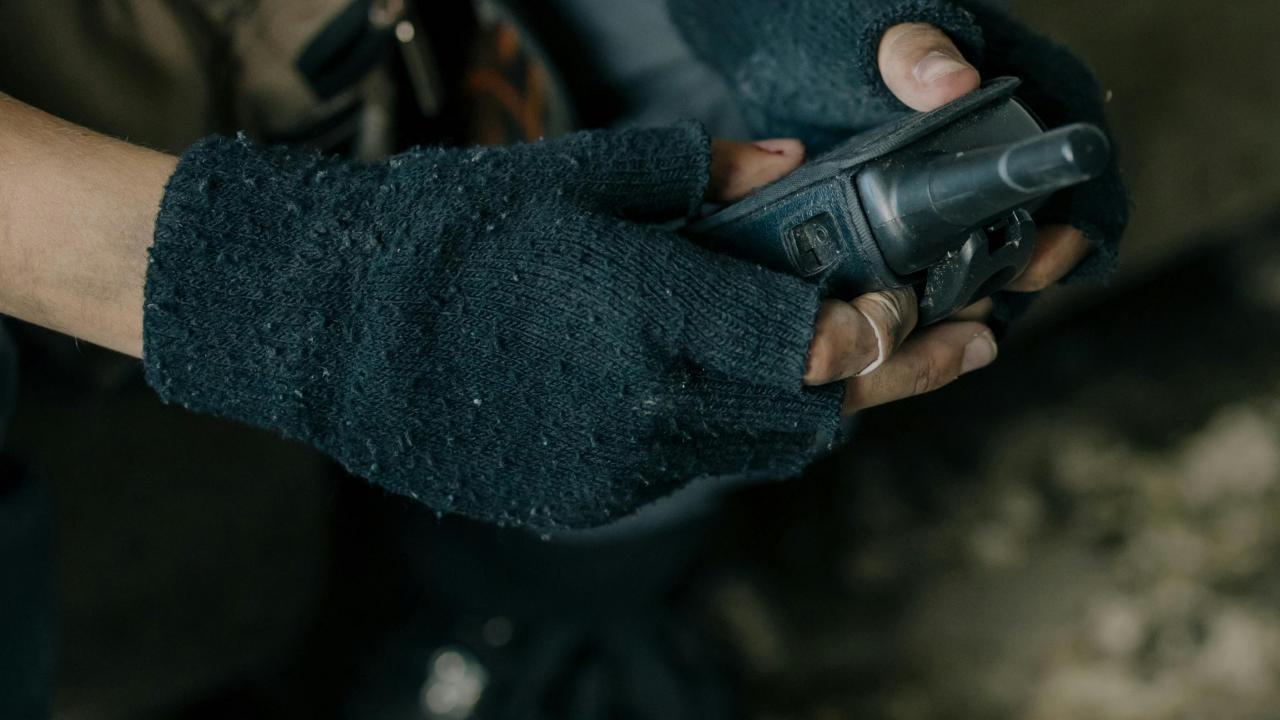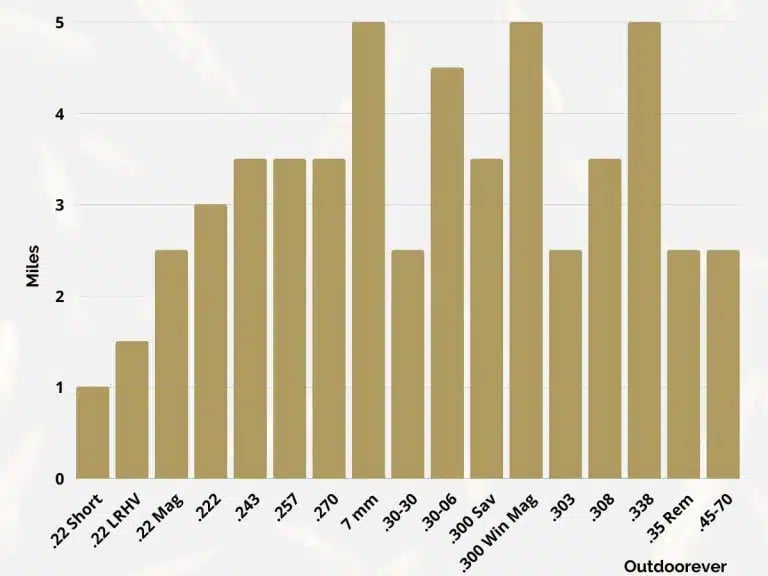
Reviews and Recommendations
When it comes to emergency preparedness, knowledge is power. But with the vast array of information and products available, it can be overwhelming to know where to start or what to trust.
Aug 21, 2024 | by N Johansson

Understanding how far a bullet can travel is critical for both safety and performance in shooting sports. Whether you’re an experienced shooter or a novice, knowing the factors that influence bullet travel helps ensure that your shots land where you intend, without unintended consequences. In this article, we’ll dive deep into the key factors that affect bullet travel distance, using 9mm and centerfire bullets as examples to illustrate these concepts. Specifically, we’ll answer common questions like "how far will a 9mm bullet travel?" and "how far can a centerfire bullet travel?" by exploring the various elements that impact a bullet’s journey from muzzle to target.
To gain a deeper understanding of ballistics, including bullet selection and performance, check out the book Understanding Ballistics: Complete Guide to Bullet Selection, which is an excellent resource for shooters looking to enhance their knowledge.
Muzzle velocity is one of the most critical factors influencing a bullet's travel distance. This is the speed at which a bullet exits the barrel of a firearm. The higher the muzzle velocity, the farther a bullet can potentially travel. For instance, many 9mm rounds have a muzzle velocity of around 1,200 feet per second (fps), while centerfire rifle bullets often exceed 2,500 fps. This substantial difference in speed directly correlates to how far each type of bullet can travel. The faster a bullet moves, the less time gravity and air resistance have to affect its trajectory, leading to a flatter, longer flight path.
For shooters looking to enhance their performance, the Dry Fire Training System is a great addition to your firearm. This stock provides a stable platform, helping you maintain accuracy and control, especially when dealing with the higher recoil associated with centerfire rifles.
The design and weight of a bullet also play crucial roles in its ability to travel long distances. A bullet’s shape, especially its aerodynamic profile, determines how efficiently it can cut through the air. Bullets with a pointed or streamlined design, often seen in centerfire rifle ammunition, experience less drag and can maintain their velocity over greater distances compared to round-nose or flat-nose designs commonly found in handgun ammunition like the 9mm. Additionally, heavier bullets tend to retain their energy better, which can help them travel farther, although they may start with a lower muzzle velocity due to their mass.
Barrel length is another important factor that influences how far a bullet can travel. A longer barrel allows for more complete combustion of the gunpowder, which can increase the bullet’s muzzle velocity. This is particularly relevant when comparing handguns to rifles. A 9mm handgun typically has a barrel length between 3 to 5 inches, whereas a centerfire rifle might have a barrel length of 20 inches or more. The longer barrel of a rifle allows the bullet to achieve a higher velocity, thus extending its range significantly.
Caliber refers to the diameter of the bullet, and it directly impacts both the bullet’s weight and the amount of gunpowder that can be loaded into the cartridge. Larger calibers generally fire heavier bullets that can travel farther due to their greater momentum, even if they have a lower initial velocity. In contrast, smaller calibers like the 9mm, while lighter and faster, may not maintain their velocity as well over long distances, limiting their range.
The angle at which a bullet is fired can dramatically affect how far it travels. For maximum distance, a bullet should be fired at an optimal angle, typically around 30 to 45 degrees above the horizontal. At this angle, the bullet benefits from both vertical and horizontal components of force, maximizing its range. However, in practical shooting scenarios, bullets are often fired at much lower angles, especially in self-defense or target shooting, which reduces their travel distance.
Atmospheric conditions, including air density, wind, and humidity, can significantly alter a bullet’s trajectory and overall travel distance. Dense air (which occurs at lower temperatures or higher altitudes) creates more drag, slowing the bullet down more quickly. Wind can push a bullet off course, especially at longer ranges, while humidity can also affect air density. For example, on a windy day, a 9mm bullet might drift significantly off course, reducing its effective range, whereas a high-velocity centerfire bullet might cut through the wind more efficiently, though it’s still subject to environmental factors.
Gravity is a constant force that causes a bullet to drop as it travels. The longer a bullet is in flight, the more it will drop. This drop is a significant factor in determining the practical range of any firearm. For instance, while a 9mm bullet may have the potential to travel over a mile, its trajectory will begin to drop significantly after about 100 yards, making accurate long-distance shooting challenging without compensation. Centerfire bullets, particularly those fired from rifles, are less affected by gravity over the same distances due to their higher velocities, but they too will eventually succumb to gravitational forces.
A 9mm bullet is capable of impressive distances, with a maximum range that can reach up to 1.5 miles (2.4 kilometers) under ideal conditions. However, this range is theoretical and not practical for accurate shooting. The effective range, where the bullet maintains enough velocity and energy to be reliable for self-defense or target shooting, is typically within 100 yards (91 meters). Beyond this distance, the bullet's drop, loss of velocity, and the impact of environmental factors like wind make it difficult to maintain accuracy and effectiveness.
Centerfire bullets, especially those fired from rifles, have a much broader range of travel. Depending on the caliber, these bullets can travel several miles. For example, a .30-06 Springfield bullet can travel up to 4 miles (6.4 kilometers) under ideal conditions. This extended range is due to the higher muzzle velocities and superior ballistic coefficients found in centerfire bullets, allowing them to maintain speed and trajectory over long distances. However, as with the 9mm, practical accuracy for centerfire bullets typically ranges from 300 yards (274 meters) to 1,000 yards (914 meters), depending on the specific caliber and shooting conditions.
Understanding the factors that influence bullet travel is essential for safe shooting practices. While knowing how far a 9mm bullet or a centerfire bullet can theoretically travel is important, it’s even more crucial to consider the implications of these distances in real-world scenarios. Long-range shooting poses significant risks, especially if done in uncontrolled environments. Bullets can travel much farther than anticipated, especially if fired at an upward angle. This highlights the importance of shooting in safe, controlled environments with adequate backstops to prevent accidents.
Bullet travel distance is influenced by a complex interplay of factors, including muzzle velocity, bullet design, barrel length, caliber, firing angle, atmospheric conditions, and gravity. By understanding how these elements affect the flight of 9mm and centerfire bullets, shooters can make informed decisions that enhance both safety and performance. Whether you're wondering "how far will a 9mm bullet travel?" or "how far can a centerfire bullet travel?", the key takeaway is that while the maximum ranges can be impressive, practical accuracy and safety must always be the top priorities in any shooting activity.